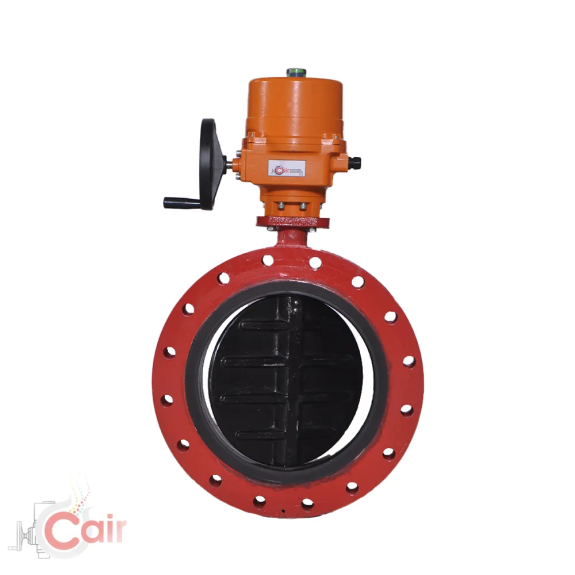Selecting the Right Motorized Butterfly Valve with Actuator for Your System

In industrial applications, the choice of valves can significantly influence the efficiency and effectiveness of a system.
Among various valve types, motorized butterfly valves with actuators stand out for their reliability, versatility, and space-saving design.
This article will guide you through the essential considerations for selecting the right motorized butterfly valve with actuator for your specific needs.
Understanding Motorized Butterfly Valves
Motorized butterfly valves are quarter-turn valves that use a rotating disc to regulate fluid flow.
The term "motorized" refers to the electric actuator that automates the opening and closing of the valve, enabling remote control and precision in flow management.
These valves are commonly used in water treatment, HVAC systems, chemical processing, and other applications where efficient fluid control is crucial.
The term "motorized" refers to the electric actuator that automates the opening and closing of the valve, enabling remote control and precision in flow management.
These valves are commonly used in water treatment, HVAC systems, chemical processing, and other applications where efficient fluid control is crucial.
Benefits of Motorized Butterfly Valves
• Compact Design: Motorized butterfly valves are typically more compact than other valve types, making them ideal for installations with limited space.
• Quick Operation: The quarter-turn mechanism allows for rapid opening and closing, reducing the time required for flow control.
• Energy Efficiency: By minimizing pressure drop across the valve, motorized butterfly valves contribute to energy savings in pumping systems.
• Versatility: These valves can handle a wide range of fluids, including gases, liquids, and slurries, making them suitable for various industrial applications.
• Reduced Maintenance: With fewer moving parts compared to other valve types, motorized butterfly valves generally require less maintenance.
Key Considerations for Selection
Application Requirements
Before selecting a motorized butterfly valve with an actuator, assess your specific application requirements.
Consider factors such as:
• Fluid Type: Different fluids may require different materials for valve construction. For example, corrosive fluids may necessitate valves made of stainless steel or other resistant materials
.
.
• Temperature and Pressure Ratings: Ensure the valve can withstand the operating temperature and pressure of your system. Each valve has specified ratings that must align with your operational needs.
Size and Flow Capacity
Selecting the right size of the motorized butterfly valve is crucial for maintaining optimal flow rates.
Valves that are too small may restrict flow, while oversized valves can lead to inefficiencies.
Use the following steps to determine the appropriate size:
• Calculate Flow Requirements: Understand the flow rate required for your application, typically measured in gallons per minute (GPM) or liters per second (LPS).
• Refer to Manufacturer Specifications: Consult manufacturer sizing charts to identify the right valve size based on your flow calculations.
Actuator Type
The actuator is a critical component that controls the valve's operation.
There are primarily two types of actuators for motorized butterfly valves:
• Electric Actuators: These are commonly used for remote control applications, providing precise control over the valve position.
They are available in various voltages and torque ratings, allowing for compatibility with diverse systems.
They are available in various voltages and torque ratings, allowing for compatibility with diverse systems.
• Pneumatic Actuators: Suitable for environments where quick response times are essential, pneumatic actuators use compressed air to operate the valve. They are often preferred in industries requiring rapid valve cycling.
Choose the actuator type that aligns with your operational needs, taking into consideration factors such as speed, control, and environmental conditions.
Control and Automation
Evaluate how the motorized butterfly valve will integrate with your existing control systems.
Some valves can be equipped with feedback systems that provide real-time data on valve position, allowing for enhanced automation.
Ensure compatibility with your control systems, whether it be PLCs (Programmable Logic Controllers) or SCADA (Supervisory Control and Data Acquisition) systems.
Quality and Certification
Investing in high-quality motorized butterfly valves is crucial for ensuring longevity and reliability.
Look for valves that meet industry standards and certifications, such as ISO, API, or ANSI.
These certifications indicate adherence to quality and safety regulations, ensuring your selected valve will perform effectively in your application.
Conclusion
Selecting the right motorized butterfly valve with actuator for your system involves careful consideration of various factors, including application requirements, size, actuator type, control integration, and quality standards.
By thoroughly evaluating these aspects, you can ensure optimal performance and reliability in your fluid control system.
If you are in Ahmedabad and looking for high-quality motorized butterfly valves and actuators, Cair Euromatic is here to assist you.
Our team of experts can guide you in choosing the right solutions tailored to your specific needs, ensuring that you achieve efficiency and effectiveness in your operations.